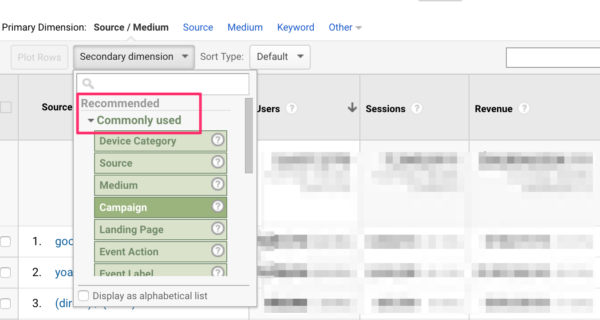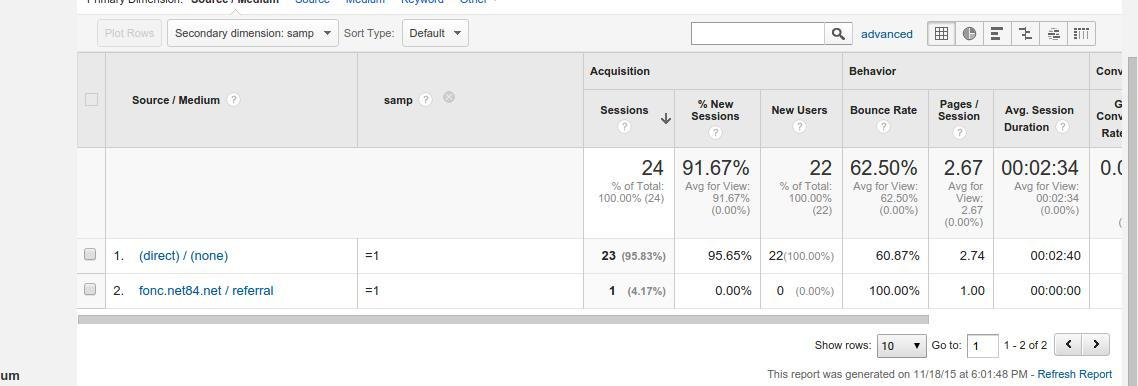Revealing the 'Secondary Dimension' in Google Analytics: What You Need to Know
Revealing the 'Secondary Dimension' in Google Analytics: What You Need to Know
Blog Article
Browsing the Depths of Secondary Measurement in Google Analytics: An In-depth Exploration on Its Functionality
Second measurements, though seemingly uncomplicated at first glimpse, harbor a wealth of untapped potential waiting to be utilized. As we get started on this journey to discover the nuanced capability of additional dimensions, we will certainly uncover how this attribute can brighten patterns, introduce relationships, and eventually lead the method for notified decision-making in the digital landscape (what is a “secondary dimension” in google analytics?).
Recognizing Second Dimensions in Google Analytics

Understanding just how secondary measurements work is important for leveraging the complete power of Google Analytics. By integrating key metrics with secondary measurements, you can acquire valuable understandings that drive notified decision-making and optimization techniques.
Leveraging Second Measurements for Data Evaluation
Building upon the foundational understanding of just how additional dimensions boost information analysis in Google Analytics, the utilization of these extra layers of info becomes paramount in drawing out useful understandings for educated decision-making and optimization techniques. By leveraging additional measurements, analysts can dive much deeper into the performance metrics by including even more context to the key dimensions, hence discovering covert patterns and relationships that might not be apparent in the beginning look. This much deeper level of analysis makes it possible for services to better recognize customer actions, identify trends, and determine locations for enhancement.
Additionally, secondary dimensions offer a more extensive view of the information, enabling segmentation based on different specifications such as demographics, devices, website traffic sources, and more. This segmentation assists in a much more granular evaluation, making it possible for services to tailor their projects and techniques to details audience sectors for improved targeting and personalization. Basically, the strategic usage of secondary dimensions equips organizations to make data-driven choices that drive growth and success in the electronic landscape.
Advanced Methods for Second Dimension Execution
Exploring complex methods to harness the full capacity of second dimensions in Google Analytics elevates the depth and class of data analysis for tactical decision-making. One innovative method for implementing additional measurements is the use of custom measurements. Additionally, incorporating additional dimensions with sophisticated segments More Info can give even a lot more granular understandings by applying several layers of segmentation to the information.
Interpreting Insights With Additional Dimensions

When analyzing understandings through second measurements, it is necessary to consider the context of the information and just how various measurements interact with pop over to this site each other. For instance, understanding which details web traffic resources cause greater conversion prices or determining which tools customers favor for making acquisitions can provide actionable understandings for optimizing marketing projects and improving general internet site efficiency. By carefully checking out the information with second dimensions in mind, businesses can make enlightened decisions that drive significant results and improve their digital visibility.
Maximizing Performance With Secondary Measurements

One crucial way to optimize efficiency with second dimensions is by segmenting information much more granularly. This allows you to separate specific factors that might be influencing your metrics and obtain a much better understanding of what drives success or failing in your digital initiatives. By combining second dimensions such as 'device group' and 'touchdown web page,' you can determine which tool kinds are most effective for particular touchdown pages, enabling you to tailor your methods accordingly.
Additionally, using second measurements can aid you recognize patterns, patterns, and relationships that might not be evident when examining information with main measurements alone. This deeper level of evaluation can result in more educated decision-making and inevitably enhance the total performance of your site or electronic marketing projects.
Verdict
In final thought, secondary measurements in Google Analytics play an important duty in improving information evaluation and giving much deeper understandings into internet site efficiency. By using innovative techniques and translating the data effectively, companies can optimize their techniques and improve overall performance. Comprehending the performance of additional measurements is necessary for making informed choices and driving success in the electronic landscape.
By leveraging secondary dimensions, analysts can dig deeper right into the performance metrics by including more context to the primary dimensions, therefore discovering covert patterns and relationships that may not be evident at very first look. One sophisticated method for applying additional measurements is the usage of custom-made measurements.Having mastered advanced methods like custom measurements and regex for secondary dimension application in Google Analytics, the following crucial action is interpreting the important insights obtained with these advanced data division approaches. Translating understandings through check secondary dimensions entails examining the connections in between the key and additional measurements selected, discovering patterns, trends, and correlations that might not be immediately apparent when looking at the information in its entirety.When analyzing understandings via second dimensions, it is important to consider the context of the data and exactly how various measurements engage with each other.
Report this page